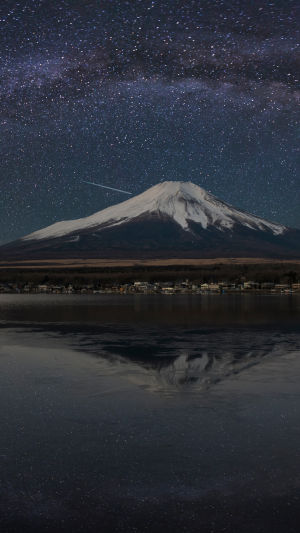Mount Fuji in Japan is a world-famous scenic spot and an active volcano. Recently, there has been news that Mount Fuji seems to be moving a bit, which has undoubtedly aroused people's attention. So how scary is Mount Fuji?
If Mount Fuji erupted, how serious would the consequences be? This article will explore this issue.
First of all, for us humans, large-scale volcanic eruptions are really scary. A typical example is that on April 5, 1815, Mount Tambora erupted violently in the northern part of Sumbawa Island, Indonesia. It released debris flows, lava flows, volcanic ash, and subsequent earthquakes and tsunamis, which directly caused the loss of tens of thousands of human lives in the nearby area.
What is even more frightening is that in the following time, the material ejected by Mount Tambora continued to spread with the flow of the earth's atmosphere, greatly reducing the solar radiation that the earth's surface can receive. As a result, 1816 was the coldest year on record.
This year is also known as the "Year without Summer". Due to the abnormally low temperature, the crops planted by humans failed in large areas or even did not harvest at all, which led to extreme shortages of food in many regions of the world, which made human beings miserable at that time.
It can be seen from this that if the eruption of Mount Fuji has such power, then its consequences will be very serious, but the question is, can the power of the eruption of Mount Fuji reach this level?
The area where Mount Fuji is located is actually an area with more active volcanic activity. Over hundreds of thousands of years, intermittent volcanic activity continuously ejected material, some of which cooled and piled up in layers to eventually form what we see today as Mount Fuji.
Mount Fuji on the modern earth is a cone-shaped volcano in terms of shape, and its altitude is about 3776 meters, which does not seem to be high. But the reality is that this altitude is actually very high on the islands of the earth, so the height of Mount Fuji can be ranked 7th among the many mountains in the world's islands.
An important condition for the formation of a conical volcano at this altitude is that there cannot be too violent volcanic eruptions during its formation.
Relevant data show that before the eruption in 1815, Tambora was about 4,100 meters above sea level. After the eruption, its altitude suddenly dropped to about 2,851 meters, and at its summit, a huge crater with a diameter of about 6,000 meters and a depth of about 700 meters was left.
The main crater at the top of Mount Fuji is only about 780 meters in diameter and only about 240 meters deep, which is simply incomparable. So it's a reasonable guess that in days past, Mt. Fuji erupted far less powerfully than Tambora's eruption in 1815.
In fact, the history of the eruption of Mount Fuji recorded by humans also supports this view to a certain extent.
In credible records dating back more than a dozen times, Mount Fuji erupted, the earliest on July 31, 781, and the latest on December 16, 1707. According to scientists' estimates, the largest volcanic eruption index on these records is around 5.
In contrast, in 1815, the eruption index of Mount Tambora reached a level of 7, a full two levels higher.
What needs to be known is that the power of a volcanic eruption can be increased by a factor of 10 for each level of increase in the volcanic eruption index. This means that the largest eruption of Mount Fuji since human records began was actually only about 1% of the size of Mount Tambora's eruption in 1815.
The scientific community generally believes that even if Mount Fuji does erupt, its volcanic eruption index is at most about 5. And this level of volcanic eruption is not as terrible as imagined, and its consequences are not serious on a global scale.
Of course, for the area near Mount Fuji, the consequences cannot be underestimated.





